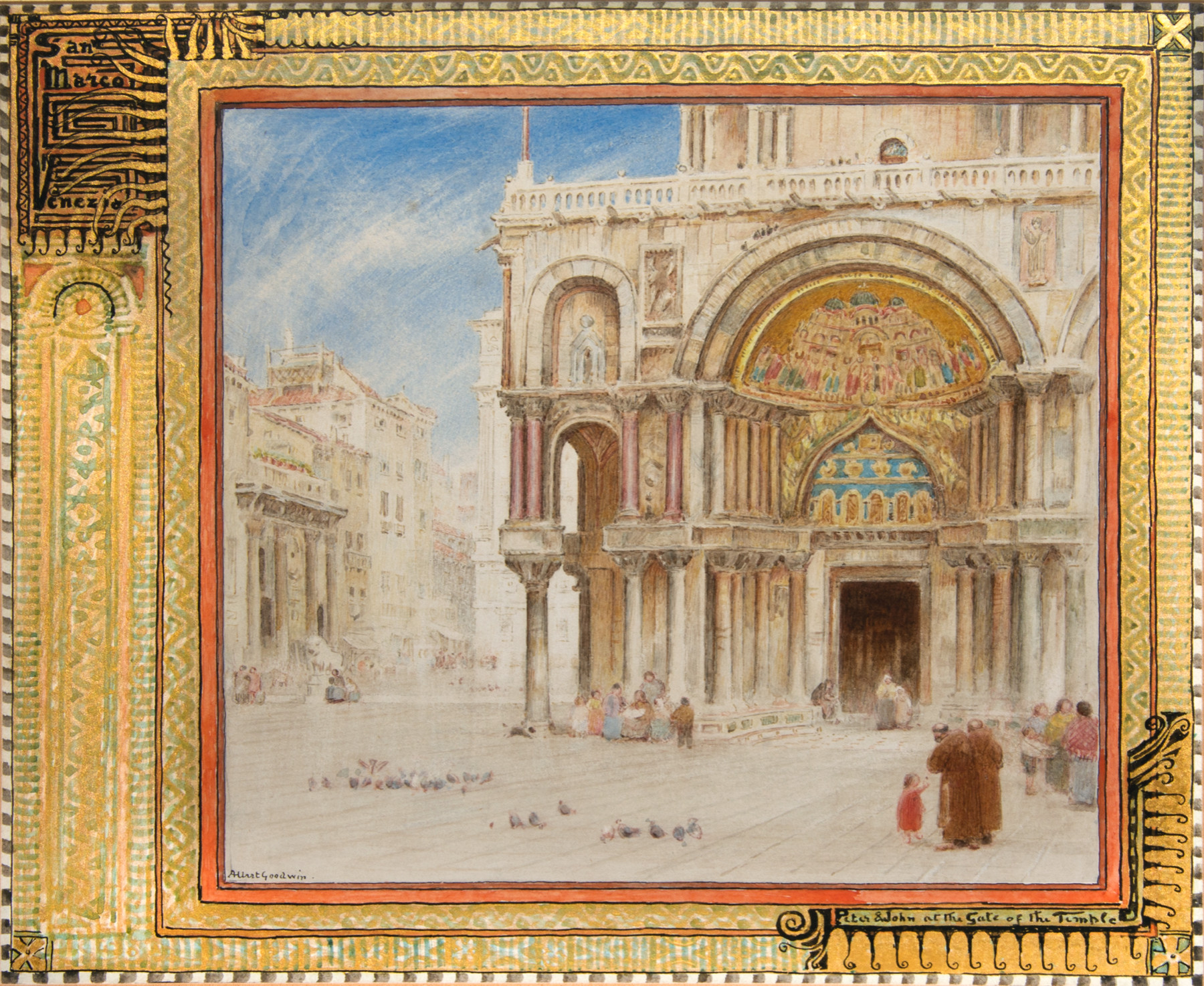
(click image to enlarge)
Albert Goodwin first visited Venice in June 1872, as a member of a party headed by the leading art critic,
John Ruskin. Ruskin encouraged his friends to enthuse about its major sights, though was amused that Goodwin should liken the Byzantine splendour of the Basilica of San Marco to a ‘travelling show’ (as Arthur Severn, another of the party, would recall in his memoir of Ruskin).
The present watercolour is one of at least two versions of a composition that Goodwin completed soon after his visit to Venice in 1872. It shows how quickly the artist absorbed the view of his mentor, Ruskin, on the beauty and importance of San Marco. It depicts the northwest corner of the basilica, and includes the Arch of Sant’Alipio, which contains the only surviving Byzantine mosaic of the original façade, representing the removal of the body of St Mark from the building. To the left of the building is the Piazzetta dei Leoncini, named after the statues of lions that it contains.
In the foreground of the watercolour, a small child seems to proffer a flower to two Franciscan friars. These friars suggested to Goodwin ‘Peter and John at the gate of the Temple’, an episode recorded in Chapter 3 the Biblical book of The Acts of the Apostles in which Saint Peter and Saint John heal a lame man outside the Temple of Jerusalem. The best known artistic representations of the story are probably Raphael’s tapestry cartoon, designed in about 1515 for the Sistine Chapel, in the Vatican, and Rembrandt’s etching of 1659.